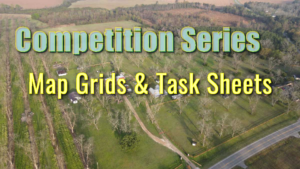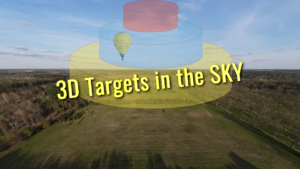WELCOME TO the Aviation-Ranch Competition Tutorials.
We have assembled short video tutorials to help explain some of the many different types of competition tasks that are currently being used in sanctioned balloon competition events. We understand that the current BFA guidelines for competition has evolved over the years to be quite complex. These complex rules are sometimes hard to understand and quite frankly can deter many from flying balloon competition. We want to help explain some of the events with these helpful video tutorials. Check back often to see the newest videos.
National Classic Event
7 markers in one flight
with 120 Balloons!
WARNING! This video is 45 minutes. Super informative but super skillful flying!
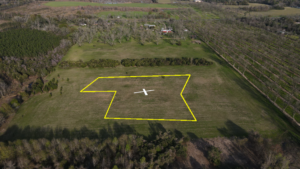 The Maximum Distance Double Drop (XDD)
The Maximum Distance Double Drop (XDD)
This is a task where a pilot is required to drop two markers within a scoring area. This task can be done in many different ways. This video tutorial will give you an idea of what the task involves and some of the ways it can be set up. The abbreviation used for this task is often (XDD)
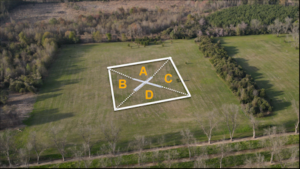 CRAT: CALCULATED RATE OF APPROACH TASK (CRT)
CRAT: CALCULATED RATE OF APPROACH TASK (CRT)
This task is a fun one and takes a bit of careful calculation. There will be different scoring areas and each has a certain period of time that the area is "OPEN". The task requires you to drop your marker as close to the designated target within the scoring area that is "OPEN" at the time you drop your marker. This one is a fun one!
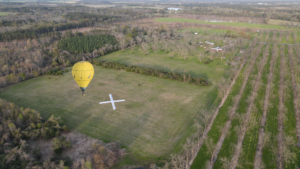 WATERSHIP DOWN (WSD)
WATERSHIP DOWN (WSD)
The water ship down is an altered way of running a Hare & Hound. Competitors are required to go upwind (a specific distance) and fly back to the field where the Hare Balloon will be launched. Careful calculations must be made to ensure you do not arrive too soon at the Hare launch site. But again, you do not want to be too late either. Many times you will have a marker to drop on a target at the Hare Launch site and then another marker to drop where the hare balloon lands.
Competition Map Grids and Task Sheets
If you have never flown competition this video is a great place to start. It walks you step by step over a 4 target flight with instruction on how to use the UTM grid on the competition map as well as what all the stuff on a Task Sheet means. In addition there are several helpful tips on what to watch out for. A GREAT PLACE TO START your adventure into competition ballooning.
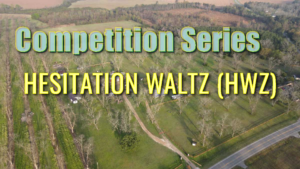
The Hesitation Waltz.
This competition task is designed to give the pilot choices of targets to hit at the end of a flight when the weather conditions may change. It is easy to make a bad choice on the hesitation waltz task. Choosing a target to the right when there is not enough turn to get there or choosing a target to the left and having the lower left layer of wind disappear. This can be a very challenging task!
Flying 3D Targets in the SKY
This is a super challenging task to fly. Imagine trying to hit a target you can not see! While the theory behind this is fairly simple the actual execution can be a challenge. Have a watch of this video tutorial make sure your sitting down.
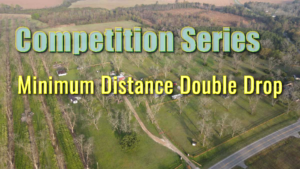 Minimum Distance Double Drop (MDD)
Minimum Distance Double Drop (MDD)
The Minimum distance double drop can be run in many ways. Sometimes with just one scoring area and an X. Sometimes with two scoring areas in one location and occasionally you could find your MDD scoring area's at completely different locations. The most important thing to remember that trying to place your marker in the smallest tip of the scoring area could cause you to loose everything! Have a watch and see what we mean.

The Elbow Task
Often refereed to as the Elbow Bender or just the Elbow. This is a fun and very challenging competition task. There are several things you may wish to take into consideration when flying an Elbow. The most important is the wind. Look for the layer aloft that has the largest change in direction. Watch this video for more tips and clues on how to run an elbow task.

The Convergent Navigational Trajectory Task (CNT)
This is a task that each of us preform every time we land. Choosing a spot to set the balloon down and knowing how to use the winds to get to that spot is something each of us preform every time we fly. While we may not choose our landing spot from a great distance away the skills used in landing a balloon are extremely similar to running a CNT.
About your host:
Jeff A Thompson has flown competition for nearly 5 decades. Starting at a young age, placing 3rd at the National Championships and winning the regional championships at age 18 in 1978. This would rank him as the #5 pilot in the country and earn him a place on the United States World Team along with pilots such as Sid Cutter and Bruce Comstock & David Schaefer. Three decades later he would still be winning events like the Carolina Balloon Fest in 2008 and become a 6 time Florida state champion. Even more than three decades later he would still rank as the #10 pilot in the United States. His skill and techniques have made him a constant top performer in balloon competition.
"Perfection is not our goal, Perfection is our standard"
![]()

